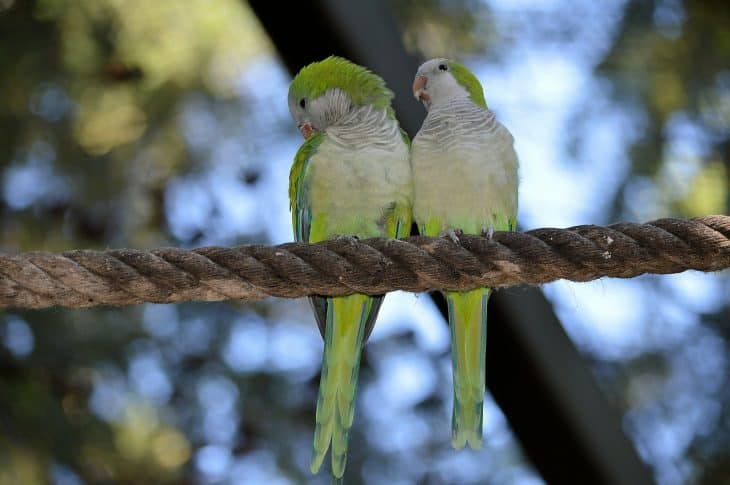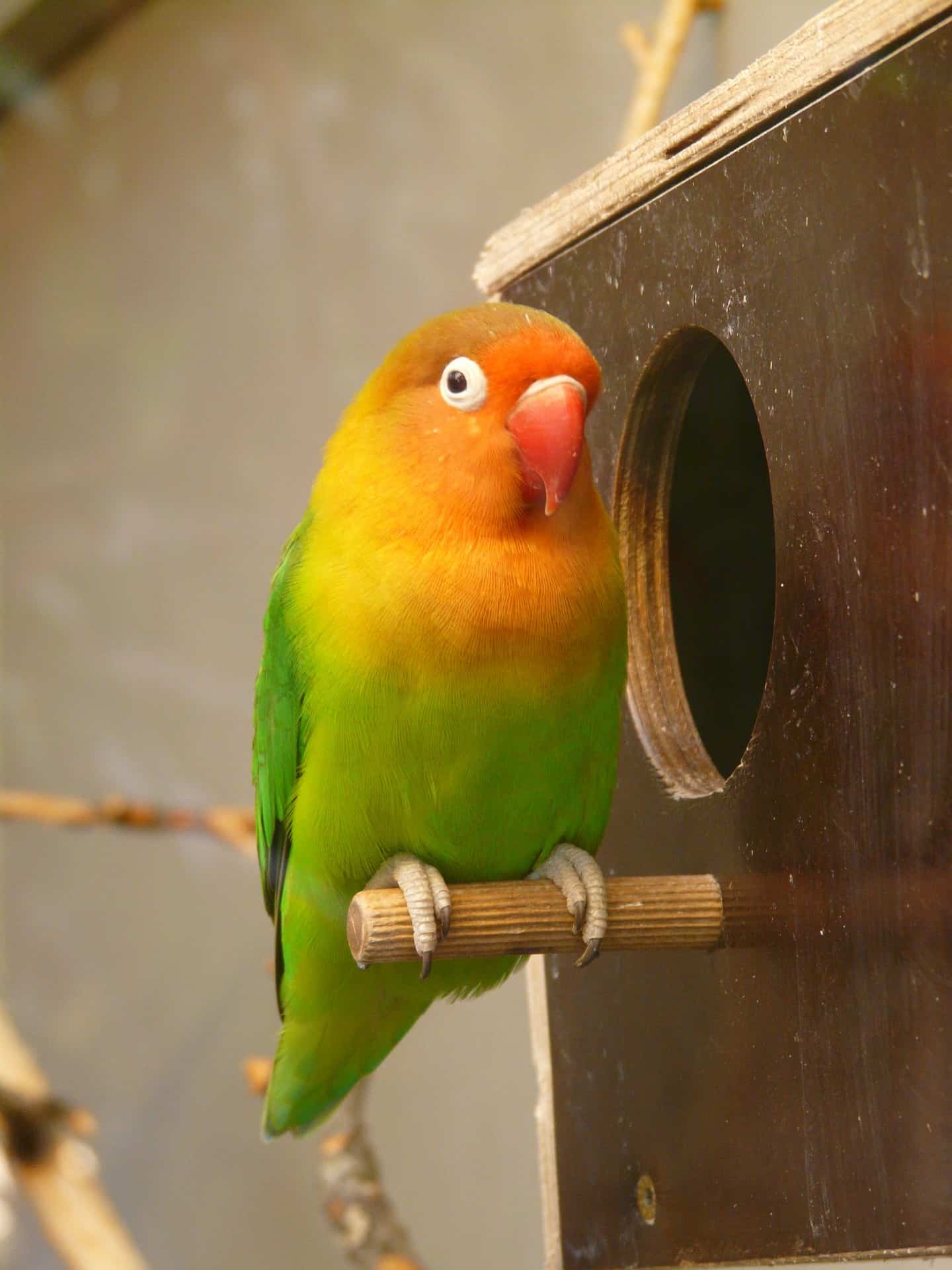
As their name suggests, love birds have often been used to symbolize undying devotion. For a bird that may literally die without its mate, it only makes sense that love birds represent this emotion. However, there’s more to them than being mates cuddling on a perch. Especially if you’re considering getting them as pets, love birds have unique behavior that you may not know of. Find out more about these animals with these facts about love birds.
- 01Today, 9 species of love birds exist in the world.
- 02Around 8 out of 9 species of their genus live in Africa.
- 03The birds usually live for up to between 20 and 30 years.
- 04They usually grow up to 17 cm long, with each wing spanning 9 cm.
- 05A love bird usually weighs between 40 to 60 grams.
- 01Naturalist John Selby classified love birds into the genus Agapornis in 1836.
- 02Agapornis literally comes from the Ancient Greek words for ‘love’ and ‘bird’.
- 03The birds actually belong to the Psittaculidae family, or as they’re better known, the parrot family.
- 04They’re actually among the smallest parrots in the world.
- 05Wild specimens usually have green feathers over most of their bodies, with a variety of other colors marking their upper bodies.
- 06Black-cheeked, masked, and Fischer’s love birds all have white rings around their eyes.
- 07Breeders have produced specimens with colors that don’t appear in the wild.
- 08The birds also tend to have stocky bodies with short tails.
- 09They also have large, sharp beaks.
- 10DNA testing is the most reliable way to tell a love bird’s gender.
- 01Professionals recommend at least 1 cubic meter of space in a cage for every love bird kept as a pet.
- 02Like human nails and hair, keratin makes up a love bird’s beak.
- 03The birds chew on and break wood to keep their beaks trimmed and healthy.
- 04Female specimens sometimes lay eggs even without mating first.
- 05Love birds naturally have high-pitched voices.
Love birds always sit next to each other.
True to their namesake, love birds would only sit next to their mate – you won’t see them hanging around any other bird. Not only that, but love birds only mate once in their whole lives, unlike other animals. Once a member of a mated pair dies, the remaining bird will never mate again.
Love birds build nests first before mating.
Love birds will mate many times to make sure the female will lay as many viable eggs as possible. Usually, it takes a female specimen between 3 to 5 days after her last mating to start laying eggs. Before she lays them, she’ll spend hours sitting in her nest, but she’ll only lay one egg every other day until she’s laid the whole clutch. Typically, a clutch of love bird eggs usually has between 4 to 6 eggs.
Some love birds become very aggressive in the mating season.
This usually happens in captivity, resulting from the smaller flying space and less access to food compared to the wild. As such, it’s not unusual at all for love birds to kill other birds to remove competition during mating season. Sometimes, they might even kill their own mates after they finish laying their eggs or within 3 weeks.
Love birds are very social animals.
In the wild, they live in flocks that can number up to several hundred birds. Even in captivity, they still prefer to live in flocks, though much smaller, usually around only 20 birds at most. Scientists have even observed love birds growing depressed over getting separated from their flock.
Love birds today are usually bred in captivity.
This avoids the problems caused by catching them in the wild, which separates them from their flock. It also allows for more available options for customers wanting to buy a love bird as a pet, as breeders can produce specimens with greater variety than in the wild.
Keeping a single love bird as a pet can get problematic.
Like we said earlier, they’re a social animal, even without facing the problems of separating them from their flock. Owners must spend several hours a day playing with or just staying around their pet to keep the love bird healthy. Neglected birds could develop psychological problems like plucking their own feathers or just screaming for attention.

Love birds can talk.
Since they’re technically parrots, this shouldn’t come as a surprise. However, it’s very rare for love birds to develop this ability. Even then, they usually have to be trained to do so from a very young age to be able to “talk.”
Pet love birds don’t usually need to have their nails trimmed.
Their nails naturally wear away and stay at a healthy length from the love bird’s daily activity. That said, this doesn’t apply to birds with inactive lifestyles, who need to have their nails regularly trimmed. You have to be careful with trimming a love bird’s nails, because cutting them too short could cause bleeding or even infections.
Love birds can be picky eaters when in captivity.
Their basic diet includes a mix of seeds, grain, and nuts, including either fresh or dried fruits and vegetables. For best results, professionals suggest adding another 30% of organic feeding pellets into the mix.
Love birds can find dangers all over the average home.
Cats and dogs, especially, might see love birds as potential prey, and attack them as a result. The birds might also chew or scratch at exposed wiring, which could end with the unfortunate love bird suffering death through electrocution. It’s also not unknown for them to drown in swimming pools or even toilet bowls. They can also get poisoned from ingesting household chemicals or even just breathing in certain fumes.

Was this page helpful?
Our commitment to delivering trustworthy and engaging content is at the heart of what we do. Each fact on our site is contributed by real users like you, bringing a wealth of diverse insights and information. To ensure the highest standards of accuracy and reliability, our dedicated editors meticulously review each submission. This process guarantees that the facts we share are not only fascinating but also credible. Trust in our commitment to quality and authenticity as you explore and learn with us.


